| Guy Motors was founded by Sydney Slater
Guy, a clever and ambitious young man, who had the determination
to succeed. He was born in 1885, and grew up in King’s Heath,
Birmingham. At the age of 16 he joined the Bellis and Morcom
steam engineering Company, at Ladywood, Birmingham, after being
offered a job in the factory. His employers were clearly
delighted with their new member of staff because they soon
offered him an apprenticeship. He attended evening classes at
the local technical school, which stood him in good stead for
the future. In 1906 he obtained the post of service manager for Humber at Coventry. |
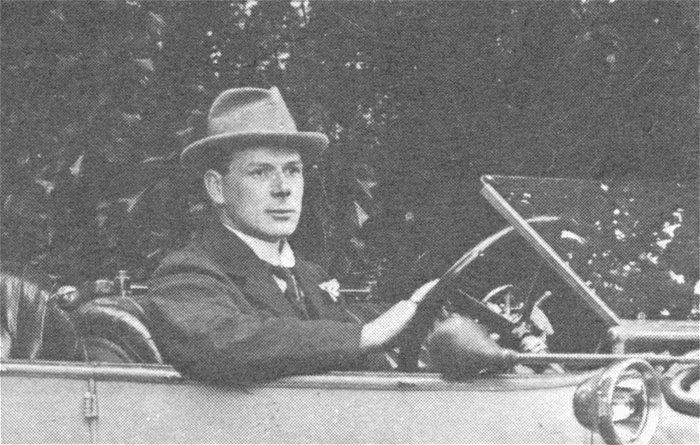
Sydney Guy.
|
In June 1909 he joined the up and coming
Sunbeam Motor Car Company Limited, in Upper Villiers Street,
Wolverhampton, as works manager. The company soon became well
known thanks to Sunbeam’s flamboyant chief engineer, Louis
Coatalen, who had joined Sunbeam in February of that year.
During Sydney’s first 4 years at Sunbeam,
production greatly increased, and profits soared, so he
naturally wanted some reward for his efforts. At the time he had
an annual salary of £250, and the use of a company car. In 1913
he asked the directors for an increase in salary, which was
refused. This possibly led to him leaving Sunbeam the following
year.
| |
|
| Read about Sydney
Slater Guy |
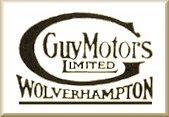 |
| |
|
Sydney Guy had clearly been thinking about,
and planning his own manufacturing business whilst still at Sunbeam. The design
for a 30 cwt. lorry was produced in a small drawing
office in Wolverhampton, in late 1913, and plans were made for
the factory which would be built the following year, in Park Lane, Fallings Park,
Wolverhampton. Guy Motors Limited was registered on the same day
that he left Sunbeam, Saturday, 30th May, 1914, and building
work on the new Guy factory rapidly got underway.
At the time, a great deal of new industrial
development was taking place in the Fallings Park area.
Previously factories had been sited closer to the town centre
and to the canal and railway network. But by this time there was
less reliance on these modes of transport, particularly in the
motor industry, and in any event, no space would have been
available nearer the centre, especially for new factories which
required greater floor space. Guy’s new factory was in
production by September 1914, nearly one month after the
outbreak of the First World War. |
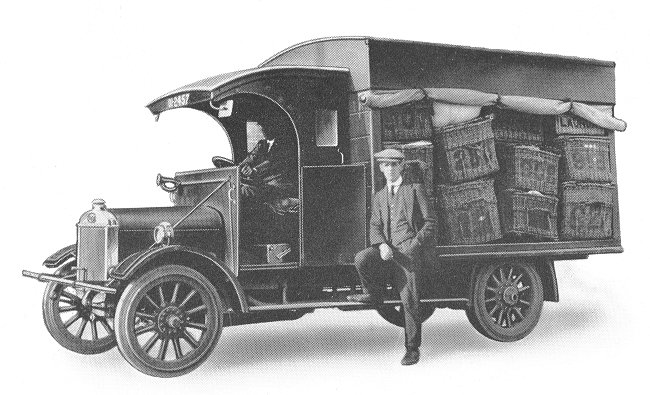
A 30 cwt. Guy lorry.
| The company’s first product, a 30 cwt.
lorry, included several new and innovative design features, and
was used as the basis for the first Guy passenger vehicle, a
14-seater post bus, with a mail compartment, built for use in
Scotland between Achnasheen railway station, east of Kinlochewe,
and Aultbea, on the west coast, north of Loch Maree. The
vehicle was powered by a White and Poppe 4-cylinder, side-valve petrol
engine, with a cone clutch and gearbox, mounted on a sub-frame, suspended at 3 points. This arrangement prevented any distortion of the chassis,
when traversing uneven ground, being transmitted to the engine
or gearbox. The gearbox had a direct drive in 3rd gear for use
when fully laden, and an indirect 4th gear for use when
travelling ‘light’, a facility that later became known as
‘overdrive’. Another innovation was a governor, which only acted
on 4th gear to limit the top speed to 30 mph. |

The 14-seater post bus.
| In 1915 the factory came under the control of the Ministry
of Munitions, and concentrated on war work.
30 cwt.lorries continued in production and were supplied to
the Russian army.
Other products included engines for tanks, aero engines, and
depth charge firing mechanisms.
Guy became the largest manufacturer of depth charge firing
mechanisms in the country.
In 1917 the company was asked to produce A.B.C. ‘Wasp’ 7
cylinder, air cooled, radial aero engines. |
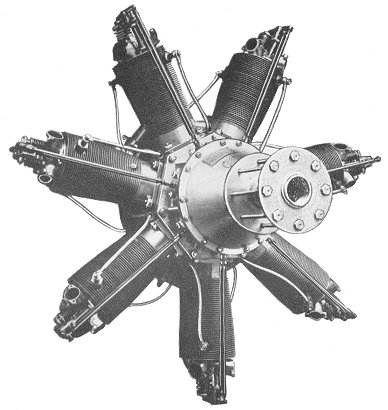
The A.B.C. ‘Wasp’ 7 cylinder, air cooled,
radial aero engine. |
|
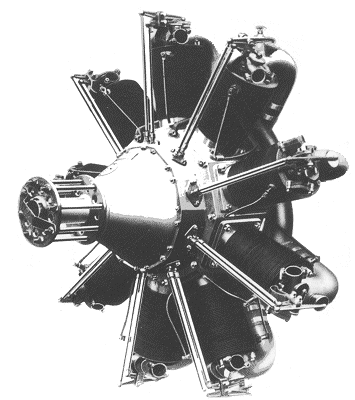
The A.B.C. ‘Dragonfly’ radial aero engine. |
The
project was clearly a success because during the following year
Guy built the prototype A.B.C. ‘Dragonfly’ 9 cylinder, 350 hp.
radial aero engine.
The prototype was built and tested in just
24 days, following the receipt of the order.
The government was
delighted, and Guy received the following telegram from Sir
William Weir, Secretary of State for Air:
Reference to your telegram of yesterday
regarding dragonfly engine. I heartily congratulate you on your
magnificent performance, the result of which it is hoped will
mark a new milestone in progress.
|
| Sir William Weir's telegram. |
 |
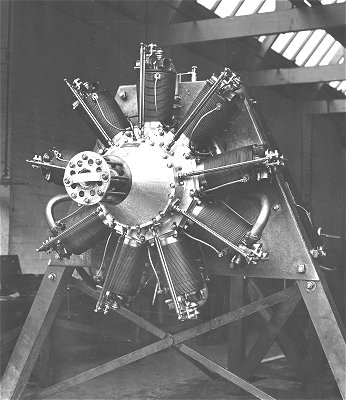 |
A 'Dragonfly' engine mounted on a test
rig at the works. Presumably the
original prototype. |
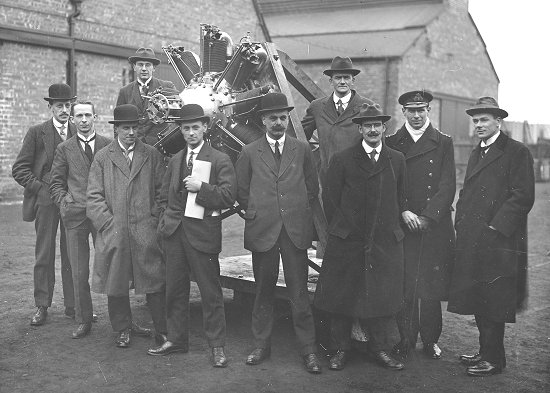 |
A group of officials examining the
prototype 'Dragonfly' outside the Guy factory. |
 |
Another view of an A.B.C. 'Dragonfly'
350 hp. radial aero engine. |

Guy also designed and produced a
12-cylinder aero engine.
|
Thanks to the many ministry orders, Guy
prospered during the war. The company became an established
name, and the factory greatly increased in size. By the end of
the war it was well equipped with some of the latest plant and
machinery. |
 |
|
 |
|
Return to the
beginning |
|
Proceed to
The
Early Inter-War Years |
|